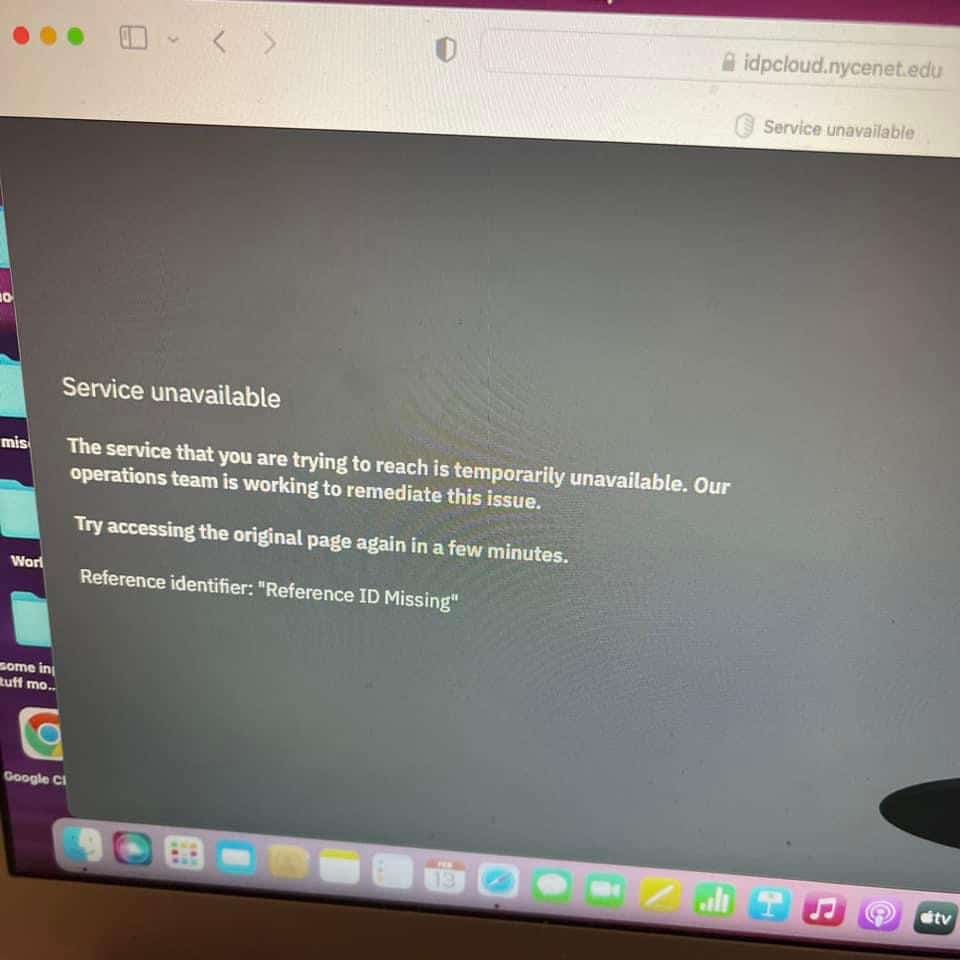Blame game: Mayor, schools chancellor point fingers at IBM for remote learning snafu – but critics point back at City Hall
Mayor Eric Adams and Public Schools Chancellor David Banks blamed Tuesday’s major meltdown of the Education Department’s remote learning system during a snowstorm squarely on IBM — one of the vendors integral to running the service.
Even so, some critics say the city should have been more prepared for the possibility of significant technical issues with remote school, which has not been used on a system-wide scale since the days of the COVID-19 pandemic.
Shortly before 8 a.m. Tuesday morning, parents and students began to experience technical issues logging into the DOE’s remote schools system — through Zoom and Google Classrooms, Banks said during a Feb. 13 virtual press conference. Soon after that, the department posted to the social media site X, formerly known as Twitter, to notify parents and students about the issue.
“We are currently experiencing issues with services that require IBM authentication to login,” the post read. “We are actively working with IBM to resolve. We will provide an update as soon as possible.”
The widespread login issues quickly led scores of parents, including some city lawmakers with children in public schools, to vent their frustrations across social media platforms.
During the news conference, Banks said the tech problems were “completely tied” to IBM’s role in authenticating users for the online system. The chancellor said he was “disappointed, frustrated and angry” that the computer systems company informed the city it did not have the capacity to handle roughly one million students as families were trying to log into school Tuesday morning.
“In a word, IBM was not ready for primetime and that’s what happened here,” Banks said. “Our entire team had been geared up and we told them that almost a million students, between 7:30 and 8 a.m. this morning, would be coming online to go to school and around that time they said ‘we were overwhelmed with the surge.’ Somehow they were surprised that there were so many folks coming on.”
Banks said that IBM steadily expanded its capacity throughout the morning and over one million users had logged onto the service by the time the press conference was almost over around 12:30 p.m. He also noted that thousands of students never had any issues logging in.
‘A teaching moment’

The mayor said the remote learning snafu was a “teaching moment” for the city and should be for IBM as well.
“We expect more from our partners and our vendors to give us the product that we’re paying for and today they did not do that,” Adams said.
However, Banks declined to say whether the city would consider dropping IBM and find a new vendor to handle the same services. Instead, he said that decision would be made after a deep “analysis” the DOE intends to conduct on what caused the system to fail on Tuesday.
An IBM spokesperson, in an emailed statement, did not directly respond to Adams and Banks blaming the company for the mishap, but did apologize to students and parents for it.
“IBM has been working closely with New York City schools to address this situation as quickly as possible,” they said. “The issues have been largely resolved, and we regret the inconvenience to students and parents across the city.”
Banks insisted both on Monday and Tuesday that the city had done its part to adequately prepare for going remote. He said the DOE ran a “simulation” in late November or early December to prepare for moving the entire public school system online at short notice, in the event of inclement weather.
But Banks, in response to a question from amNewYork Metro, then acknowledged that IBM was not involved in the simulation at all.
“I don’t think IBM played a role with us in simulation,” Banks said. “Perhaps they should have been … We pay IBM a lot of money in the contracting services that we have and we expect for them to be able to deliver, whether they’re part of a simulation or not.”
Banks also said the simulation was not a full simulation that mirrored exactly what every student in the system trying to log on at the same time from home would be like.
Referrals for a stress test
City Council Member Rita Joseph, who chairs the body’s Education Committee and was a teacher herself, said not that the city not making sure that IBM was included in the simulation was “irresponsible.”
“If they’re the provider, they should have been in the room, at the table,” Joseph said, in an interview. “So IBM cannot be solely blamed for the lack of effectiveness when it comes to New York City Public Schools’ performance.”
The Uunited Federation of Teachers (UFT), the union that represents most public school teachers, told its members in an email that the city should have been more prepared and must conduct a “true stress test” that would resemble an actual remote school day in the future.
Joseph, whose own son had trouble logging onto remote school on Tuesday, said that going forward the DOE should have a “crisis remote learning management plan” ready for days when schools must quickly shift to remote learning. Additionally, she said the DOE needs better technological “infrastructure” to avoid similar issues in the future.
“Today was an infrastructure issue in terms of we could not support as many families,” Joseph said. “So they have to update the technology infrastructure in our school, train the educators [and] families and implement also language access as well.”







